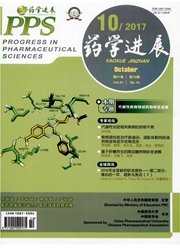

 中文摘要:
中文摘要:
目的探讨经皮经肝胆管引流术(Percutaneous Transhepatic Cholangiography and Drainage,PTCD)及经皮经肝胆管内支架引流术(Percutaneous Transhepatic Insertion of Biliary Stent,PTIBS)治疗恶性梗阻性黄疽的临床疗效。方法恶性梗阻性黄疽24例,均采用DSA引导下PTCD或PTCD+EMBE术治疗,术后7~10d复查血生化指标。结果本组23例患者黄疸症状减退,7~10d后直接胆红素明显降低,肝功能改善,前后差异有统计学意义(P〈0.05)。1例患者引流不畅,黄疸无减退,2月后死亡,无严重并发症发生。结论PTCD是一种治疗恶性梗阻性黄疽姑息性治疗的有效方法,提高患者生存质量、延长生存期。具有创伤小、安全、简便、经济等优点.
 英文摘要:
英文摘要:
Objective: To research the clinical efficacy of the treatment for the malignant obstructive jaundice by Percutaneous Transhepatic Cholangiography and Drainage (PTCD) or Percutaneous Transhepatic Insertion of Biliary Stent (PTIBS). Methods 24 patients suffered with Malignant obstructive jaundice was treated by PTCD or PTCD+ PTIBS. Blood biochemical parameters was Compared after the operation 7-10 days. Result The Jaundice of 23 patients decreased immediately after the operation and the the severity of the Direct bilirubin Declined distinctly, together with the improvement of the liver function. There was statistically significant difference before and after the therapy (P〈0.05). One patient died 2 months later because of the inadequate drainage of bile, which lead to the continous Jaundice. Conclusion The PTCD and PTIBS, with the quanlity of minimally invasive, safety, convenient and cheapness are effective palliative methods for the obstructive jaundice, which can improve the quality of life and lengthen the survival time.
 同期刊论文项目
同期刊论文项目
 同项目期刊论文
同项目期刊论文
 期刊信息
期刊信息
